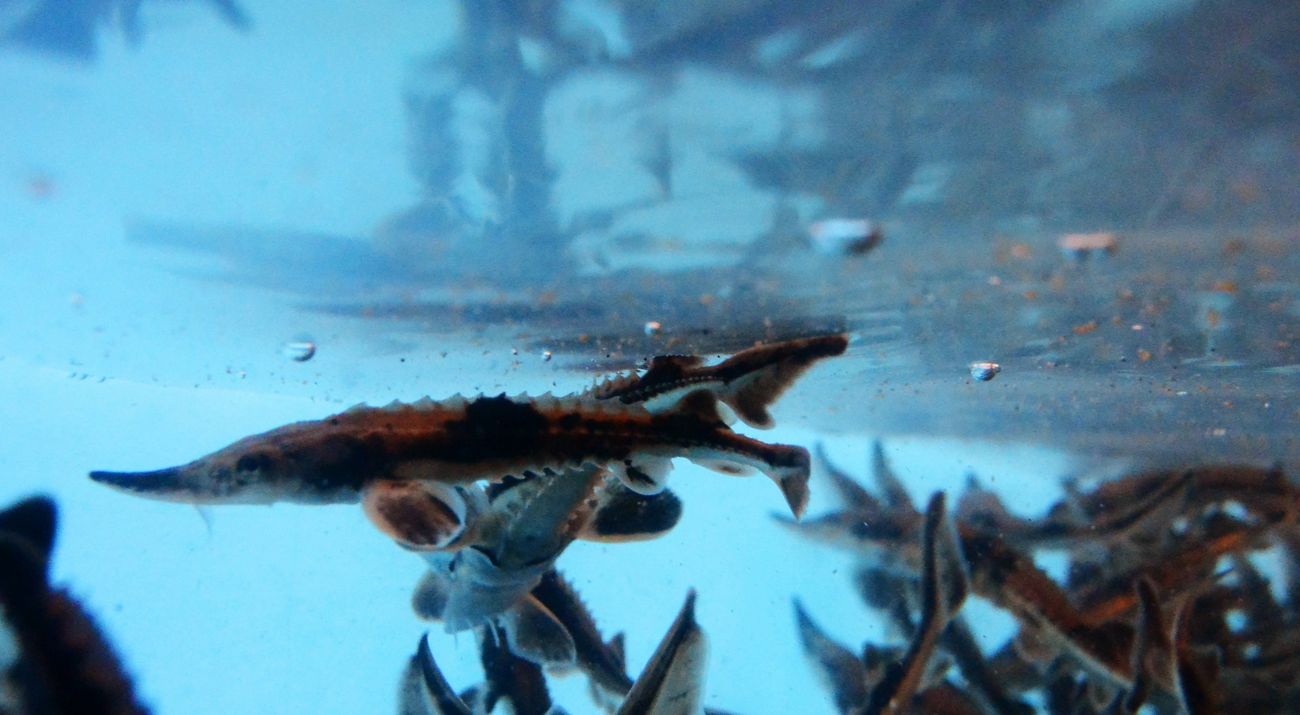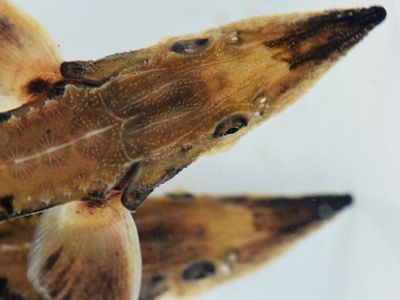
Meet the Lake Sturgeon
The lake sturgeon is an ancient fish, characterized by
five rows of bony plates
a heavy torpedo-shaped body
four smooth barbels on the lower snout, and a
cartilaginous body structure.
Large lake sturgeon can grow to more than eight feet in length and weigh as much as 800 pounds. Despite the name, lake sturgeon are found on the bottoms of both lakes and rivers in Canada and the eastern half of the United States. Some have even been observed in brackish waters. The Great Lakes and St. Lawrence River basin are home to the largest populations
Extremely long-lived, lake sturgeon can reach ages of 100 years or more. They grow rapidly in their first 10 years but reach sexual maturity more slowly than any other freshwater fish. Males reach sexual maturity around 15-20 years; females around 20-25 years.
In the spring or early summer, depending on local water temperature, lake sturgeon migrate upstream in rivers to spawn. Females release 50,000-700,000 eggs that are fertilized by nearby males and then attach to rocky surfaces. If the eggs aren’t eaten by other fish, they will hatch within 5-8 days.
Lake sturgeon generally eat
leeches
snails
small clams
insects
sometimes small fish and plants.
They swim slowly across the river or lake bottom, dragging their sensitive barbels. When they sense food, their tubular, toothless mouth extends to suck up food, expelling any sediment through their gills.

Protecting the Lake Sturgeon
Sturgeon were once considered pests because their bony plates and barbels ripped the nets of fishermen. These fish were slaughtered until new uses were found for them in the second half of the 19th century: they could be burned as fuel for steamships, their swim bladders were could be used in making wine and beer, and Americans and Canadians could ship their eggs to Europe and get them relabeled as “Russian caviar.”
All of this was happening over the same time period that many dams were built, blocking sturgeon migration.
Populations declined rapidly, and in some it’s range, the sturgeon was not seen again for decades.
Today, commercial fishing for lake sturgeon is banned in the U.S. and strictly limited in Canada. Recovery work is underway throughout most of the historic range. The Nature Conservancy is helping conserve areas that the fish use to spawn, including Clough Island in the St. Louis River. Along the Delaware River, TNC has studied the ideal habitat conditions for sturgeon and—specifically salinity and oxygen levels—and the results are guiding conservation efforts in New Jersey and Delaware.
This work, over many years, has worked extremely well. These days, global populations remain healthy. The IUCN lists the lake sturgeon as a species of least concern.